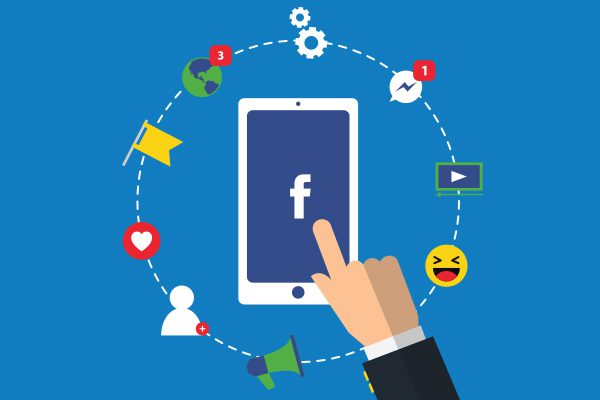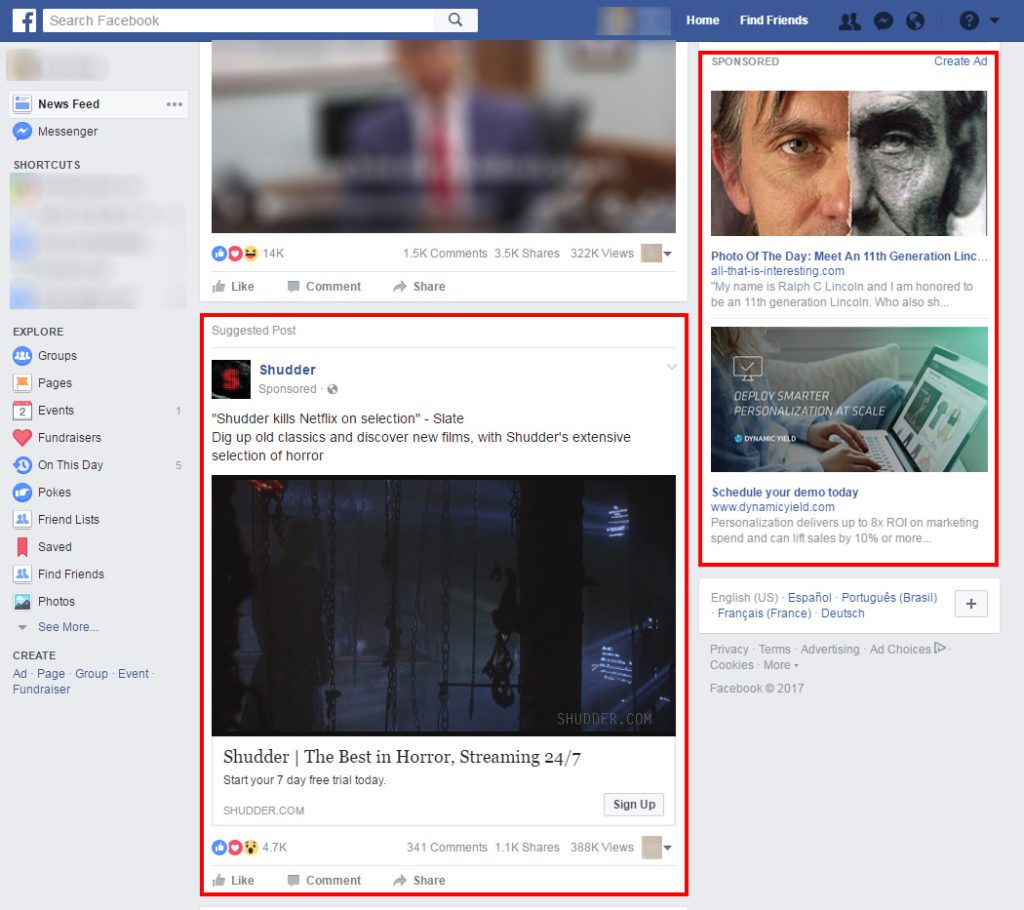
Facebook ads are here, and they aren’t going anywhere.
They reach a massive audience of over 1.2 billion daily active users (a number that is only growing). As advertisers know from experience, however, costs inflate and conversion rates tank when an audience isn’t actively searching for your offering.
For this reason (with the notable exception of retargeting), Facebook ads tend to significantly underperform when used for intention-based search ads.
With that in mind, the following are four essential Facebook ads strategies to help collect and drive leads.
1. Proper Ad Targeting: Don’t Over Do It
What Facebook might lack in capturing the intent of its users, it more than makes up for with insights fueling its own ad/audience targeting algorithms. Facebook tracks its audience around the internet on any site with a “like” button, and yes, the company probably even knows where you live.
For privacy reasons, Facebook doesn’t expose most of these big data points to direct advertiser targeting, but your Facebook ads will benefit nonetheless.
Facebook ads optimization algorithms take every element into account to target your ads to the most responsive portion of the audience within your predefined targeting parameters. If you’re familiar with search engine marketing such as AdWords, the goal is usually to make your ads as specific as possible.
As a fitting sports analogy, the advertiser is responsible for getting the ball to the 5 yard line with highly targeted ad groups, after which the search engines employ their targeting magic using broad search term matching and bidding algorithms.
Such a strategy backfires with Facebook ads.
With Facebook, your ad targeting only needs to get the ball 60 yards down the field. Facebook needs plenty of space for their auto-optimization to kick a field goal.
 An audience size of 1MM to 1.5MM is the sweet spot for Facebook ad targeting, and your Facebook ads should speak broadly to this audience’s interests. Facebook will then apply their optimization magic to show your ads to the users most likely to achieve the goal you’re looking for.
An audience size of 1MM to 1.5MM is the sweet spot for Facebook ad targeting, and your Facebook ads should speak broadly to this audience’s interests. Facebook will then apply their optimization magic to show your ads to the users most likely to achieve the goal you’re looking for.
2. Images Aren’t Optional for Ad Success
Due to the increased likelihood of user interaction, Facebook has long extended the reach of image posts over those using text written out directly.
Facebook posts with at least one image see 230% more engagement, so it’s no wonder that all ads require an image.
Although you aren’t required to use multiple images, Facebook now allows as many as 10 images in carousel ads. These ads show up directly in a user’s news feed and generate more clicks at a lower cost per click than any other social media ad unit ROI has tested.
There is no definitive answer on how many images should be used, but we’ve found that the sweet spot is right around five.
Using all 10 is useful in certain situations or with certain verticals, such as with products that are complex or hard to understand, or for fashion brands showcasing multiple products/lines.
The caveat is, the more images you use, the less likely the viewer is to click through them all. Much like we mentioned about relaxing some with targeting, sometimes less is more.
Facebook users are free to swipe through each of the images, and the advertiser pays according to how they bid.
At ROI, we recommend a bidding strategy of cost per 1,000 impressions (CPM), where a single impression occurs every time the ad appears in a Facebook users feed.
This method is an ideal match to the Facebook algorithm, which serves ads to people who are most likely to take action. You then have the option to let Facebook automatically optimize the order of the images based on those determined to generate the highest engagement.
Another great format to test is Lead Ads. They provide the best user experience as ad clicks stay within the Facebook interface.
This allows Facebook to auto-populate form fields with the user’s name and email address, removing plenty of friction. You can customize your lead form to include other questions such as job title or address, or even create up to three of your own custom fields.
The smooth and quick user experience of this ad format tends to increase the number of leads and lower your cost per lead.
3. Mobile Optimization is an Absolute Necessity
Facebook rolled out their mobile ad platform back in 2012.
In just five short years, mobile advertising has skyrocketed to account for 90% of Facebook’s revenue growth! Just let that statistic sink in for a moment while you take a look at a few other mind-boggling stats:
- 90% of their daily active users access via mobile.
- 81% of their advertising revenue comes from mobile ads.
- 57% of their users ONLY ever use Facebook on a mobile device.
These stats mean your effectiveness on Facebook is crippled if your mobile site underperforms. It needs to be easy to complete a website action from a phone.
The first step to optimizing for mobile begins when you are building the ads themselves. Facebook’s Power Editor, where you create your ads, unfortunately defaults to a desktop view for their preview. This is counter-intuitive based on the overwhelming majority of traffic that comes via mobile.
Thankfully, it’s easy to switch over to a preview for mobile, and this is something that every advertiser needs to focus on.
Thinking of everything you do on Facebook from a mobile-first perspective will greatly benefit your business and your bottom line.
4. Engagement, Brand Awareness, and Conversions NEED Retargeting
We can’t stress this one enough, people. Retargeting is a MUST strategy that typically outperforms any other paid marketing channels.
Are you neglecting it? Well, you’ve got a lot on your plate, so we won’t judge!
However, Facebook accounts for nearly 20% of all page views in the United States. That is a market no advertiser can afford to pass up!
So in addition to whatever other retargeting you are doing, you need to be focusing on the red-hot audience of site visitors and landing page abandoners through Facebook as well.
Facebook retargeting has some advantages over other platforms:
• Facebook, of course, knows its users regardless of device. It tracks actual people, not just cookies. So whether you initially attracted a potential lead on mobile or desktop, you can reach them on whatever device they use next. Google can do this too, but with a much smaller percentage of their audience.
• Facebook is in the unique position of having an incredibly captive audience, more-so than pretty much any other advertising platform. The average Facebook user spends 50 minutes a day on the site. That’s an incredibly large amount of time to make an impression on a viewer.
• Facebook has a veritable monopoly on the social media scene. Although Instagram, Pinterest, and even Snapchat are rapidly building out their advertising capabilities, Facebook still commands over 70% of all social network ad revenue. In fact, more than 26% of total US digital display ad revenue came from Facebook in 2016!
 Besides the advantages Facebook has, there are also plenty of interesting capabilities of retargeting on the platform that make it stand out.
Besides the advantages Facebook has, there are also plenty of interesting capabilities of retargeting on the platform that make it stand out.
Facebook retargeting ads can now re-engage with audiences that have:
• Previously visited your Facebook page
• Engaged with any post or ad
• Messaged your page
• Saved your page or any post
• Viewed an advertiser’s video (you can choose from multiple options for how much of a video was watch by the viewer: 3 seconds, 10 seconds, 25%, 50%, 75%, or 90%)
• Clicked on a Call-to-Action (CTA)
• Engaged with a lead form (i.e. submitted an email but did not convert) or canvas ad.
A major component of ROI Revolution’s strategy with our clients revolves around retargeting, specifically with dynamic ads. These types of ads automatically promote relevant product(s) from your full product catalog or a specific product set across all devices. This is incredibly useful since it promotes ads to customers who have previously visited or taken an action on your website or app. These dynamic ads are a huge time-saver, as you are not stuck configuring ads individually, they are auto-created by Facebook.
As if all that isn’t reason enough to be retargeting on Facebook, there’s one other huge advantage. Customers who have engaged with an advertiser’s page can be retargeted for up to 365 days. So even customers who interacted almost an entire year ago can be re-engaged to improve brand awareness or even go for that elusive conversion.
Interested in learning more? Download our white paper on Facebook Ad Strategies or schedule a complimentary social media consult where our experts can analyze your account and outline strategies for future success.




